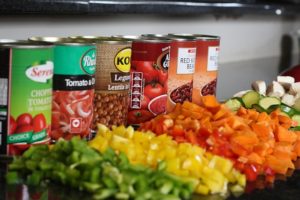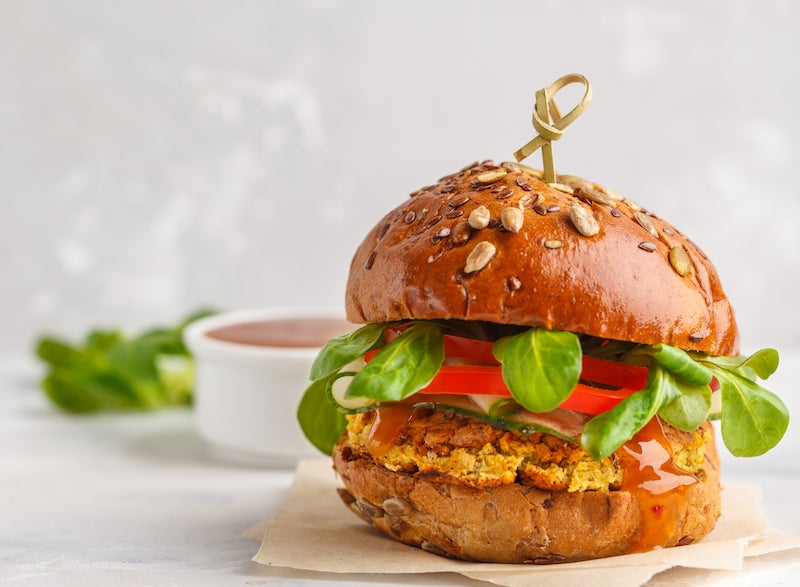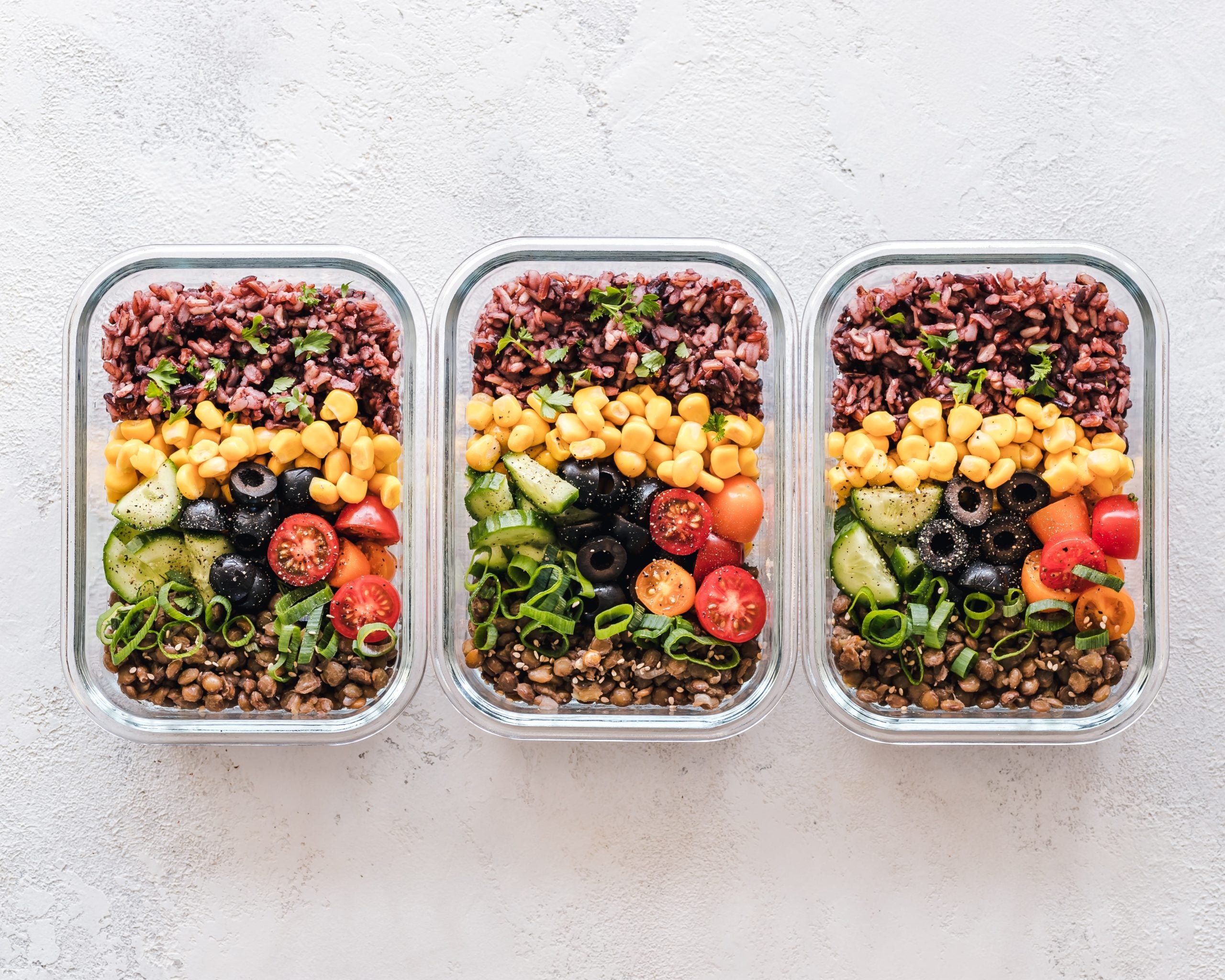An all-too-common mantra says, “It’s too expensive to eat healthy.” It’s true that when comparing specific foods like organic fruits with conventional fruits, the former tends to be a few dollars more per pound. And when a shopping cart filled with fresh produce, poultry, and fish is compared with one loaded with boxes of macaroni and cheese, ground hamburger meat, and cookies, the latter will likely ring lower at the cash register.
Certainly, policy improvements and other actions are needed to create a food environment where the healthy choice is the easy and accessible choice. In the meantime, know that creating nutritious meals can be more affordable than one might think. In fact, one meta-analysis looking at the price difference between healthful and less healthful dietary patterns found that diets with healthier foods only cost a bit more—about $1.48 per day. [1]
A note on food affordability and resources that can help
From the supermarket to the kitchen, here are some strategies to get the biggest nutrition bang for your buck.
Tips for Supermarket Savings
 Supermarket savings isn’t just about finding the cheapest sale items. It also means preventing impulse purchases that are caused by enticing food advertising or shopping on an empty stomach (that makes everything look delicious!). Food waste is another money drain when food spoils before it is prepared or eaten and is thrown out. Consider the following tips before heading to the market:
Supermarket savings isn’t just about finding the cheapest sale items. It also means preventing impulse purchases that are caused by enticing food advertising or shopping on an empty stomach (that makes everything look delicious!). Food waste is another money drain when food spoils before it is prepared or eaten and is thrown out. Consider the following tips before heading to the market:
- Plan out a few meals you want to prepare the next week and create your shopping list based on these ingredients.
- Consider meatless meals. Plant-based proteins are highly nutritious and generally more affordable than meats and fish. If you still crave meat, incorporate smaller amounts as a base for flavor or as a condiment, while focusing on plant proteins like beans or tofu so that you can save on cost, increase volume of the meal, and boost nutrition and heartiness.
- Purchase foods and snacks that are satiating and filling. How easy is it to eat a half a package of chips in one sitting? In contrast, how many handfuls of nuts or apples can you eat at one time? Even though a 3-pound bag of apples may cost $4.00 versus $2.50 for a large bag of chips, consider which will satisfy your hunger longer. One study found that unsatiating foods leave people wanting to eat more often, which may translate into greater food costs. [2]
- Don’t shop on an empty stomach. Munch on a piece of fruit or some nuts before entering the store.
- Allow for flexibility in your shopping list if items like fresh produce or poultry and fish are on sale. If they are foods you enjoy, you might purchase extra quantities and freeze them for later use. Fresh meats, fish, and some produce (bananas, berries, avocados, broccoli, cauliflower, Brussels sprouts, corn) freeze well.
- Consider purchasing nonperishable staple foods in bulk. Even though it may cost more upfront to buy a “family-sized” package products like whole grains, lentils, and dried beans, the cost per unit is usually cheaper. To determine this, you will need to calculate the price per unit:
- Find the common unit of measurement when comparing two products. For example, a bag of brown rice may be in pounds.
- Divide the price of the rice by the total pounds, which is the price per unit. Example: Rice A costs $1.59 for a 1-pound bag ($1.59 per pound), whereas Rice B costs $3.99 for a 5-pound bag (about $0.80 per pound). Rice B is cheaper.
- Buy generic or store-brand: you will notice when comparing the ingredients list that similar if not identical ingredients are used. The generic brand is generally cheaper because less money is spent on advertising and creating fancy food labels.
- Scan the discounted produce cart that usually sits in a corner; this is filled with produce starting to age but which are still tasty if you can eat them the same day or the next day.
- Don’t buy more highly perishable items than you can use in one week (unless you plan to freeze them), or else you run the risk of food spoilage and waste. Learn how to store produce correctly for a longer shelf life, and be aware of highly perishable foods such as ready-to-eat bagged salad greens, mushrooms, berries, avocados, and bananas.
 Stretch your fresh herbs, spices, and alliums. These are key ingredients for building flavorful meals, and while alliums like onions and garlic have a longer shelf life, bagged herbs in the supermarket are particularly perishable. Unless a recipe calls for a whole package (e.g. a bunch of basil for pesto), you’ll be left with extra sprigs. Careful storage can help extend the shelf life (e.g. cilantro in a cup of water covered with a bag), but if you don’t plan on using within one week, consider other ways to extend their utility. One idea is to chop and freeze herbs in an ice cube tray filled with olive oil—ready to be popped in a pan to sauté vegetables.
Stretch your fresh herbs, spices, and alliums. These are key ingredients for building flavorful meals, and while alliums like onions and garlic have a longer shelf life, bagged herbs in the supermarket are particularly perishable. Unless a recipe calls for a whole package (e.g. a bunch of basil for pesto), you’ll be left with extra sprigs. Careful storage can help extend the shelf life (e.g. cilantro in a cup of water covered with a bag), but if you don’t plan on using within one week, consider other ways to extend their utility. One idea is to chop and freeze herbs in an ice cube tray filled with olive oil—ready to be popped in a pan to sauté vegetables.
- Another flavor-builder that can handle the freezer is ginger: store in an airtight bag and when ready to use, peel and grate as much as you like (no need to thaw), returning the remainder to the freezer.
- If you enjoy fresh scallions (green onions), you can easily regrow them on a sunny windowsill. Place the white root ends in a glass of water (changing out the water about once per week). Once the green ends have regrown, snip what you need and let the rest keep growing.
- Use what you have before buying more. Commit to taking inventory of all the food in your kitchen twice a month. Bring forward the buried items and plan meals based on these ingredients.
- Eat attentively. Practicing mindfulness during meals (known as mindful eating) can increase enjoyment of the food. You may even be satisfied with smaller portions. Conversely, eating while distracted can lead to feeling hungry again sooner and a higher intake of food later on. [3,4]
Nutritious and Inexpensive Staples
 A combination of fresh and processed foods can make up a healthful shopping list. Processed foods have their pros and cons but they shouldn’t be entirely labeled as unhealthy, since the degree of processing and type of processing affects nutrient content. For example, thanks to processing methods like freezing and canning, we can fill our freezers and stock our pantries with healthy staples like frozen fruits and vegetables, tinned fish, and canned beans. That said, when choosing canned or frozen foods, select options that do not include extra sodium, sugar, or other additives.
A combination of fresh and processed foods can make up a healthful shopping list. Processed foods have their pros and cons but they shouldn’t be entirely labeled as unhealthy, since the degree of processing and type of processing affects nutrient content. For example, thanks to processing methods like freezing and canning, we can fill our freezers and stock our pantries with healthy staples like frozen fruits and vegetables, tinned fish, and canned beans. That said, when choosing canned or frozen foods, select options that do not include extra sodium, sugar, or other additives.
Here are some foods that are economical year-round and offer a wide range of nutrients including protein, fiber, vitamins, and minerals:
Getting Into the Kitchen
With these staples in your culinary arsenal, you’re ready to get started on any number of meals. Here are a few ideas:

Veggie burgers
Homemade chicken nuggets
*May add to the crushed cornflakes 1-2 teaspoons of any herbs and spices; examples are thyme, parsley, onion powder, garlic powder, black pepper.

Three-bean chili
Looking for more recipes? Explore our full bank of recipes for cooking at home, or check out these delicious chef-designed dishes from The Culinary Institute of America.* While local costs may vary, all recipes were budgeted to cost $2 or less per serving:
- Salad Rolls with Fried Tofu, Green Beans, and Chili-Lime Dipping Sauce
- Cardamom Cauliflower
- Cabbage Avocado Salad
- Siena’s Favorite Broccoli
- Spicy Pickled Vegetables
- Fava with Tomato-Braised Capers
- Simple Zesty Green Beans
- Spinach, Onion, and Red Pepper Frittata
- Avocado Mango Salsa
- Braised Carrots with Ginger
- Kimchi
- Roasted Sweet Potatoes with Crispy Kale
- Crunchy Corn and Bean Salad
- Pasta with Roasted Sweet Potato, Broccoli, Beans
- Carrot Kibbeh
- Roasted Okra and Sweet Potatoes
- Black-Eyed Peas and Collard Greens Caviar
- Chunky Eggplant Salad
- Curried Lentil Soup
- Shawarma-Style Chicken “Nachos” with Cucumber, Tomato, and Tahini
- Stir-Fried Green Beans with Coconut
- Butternut Squash Gozleme
- Green Tomatillo Salsa
- Baba Ganoush
*Recipes courtesy of The Culinary Institute of America, developed for Healthy Kitchens, Healthy Lives (HKHL), a collaboration between the Harvard Chan School’s Department of Nutrition and The Culinary Institute of America. Most of these recipes align with HKHL Recipe Nutrition Goals (2020).
Last reviewed December 2022
Terms of Use
The contents of this website are for educational purposes and are not intended to offer personal medical advice. You should seek the advice of your physician or other qualified health provider with any questions you may have regarding a medical condition. Never disregard professional medical advice or delay in seeking it because of something you have read on this website. The Nutrition Source does not recommend or endorse any products.
